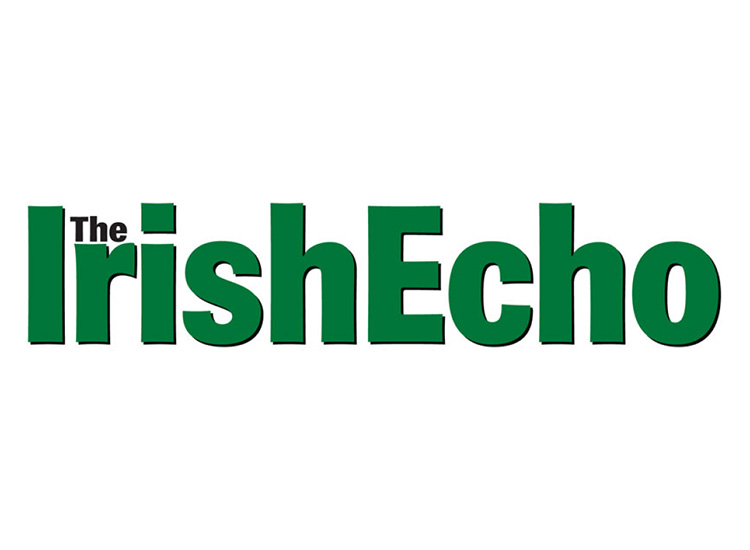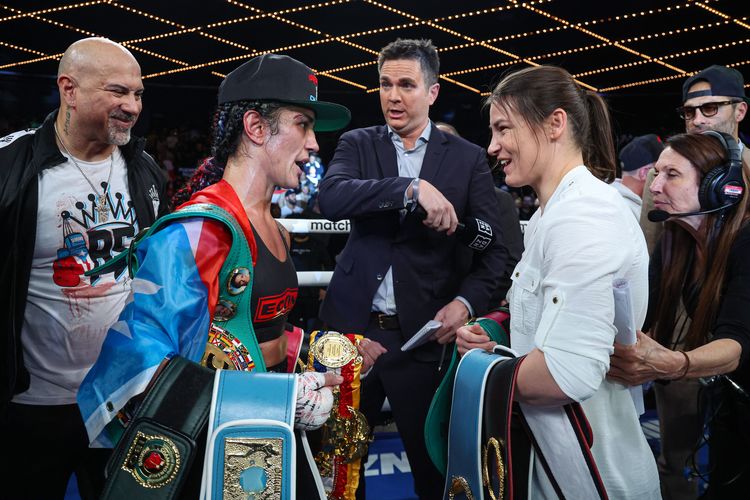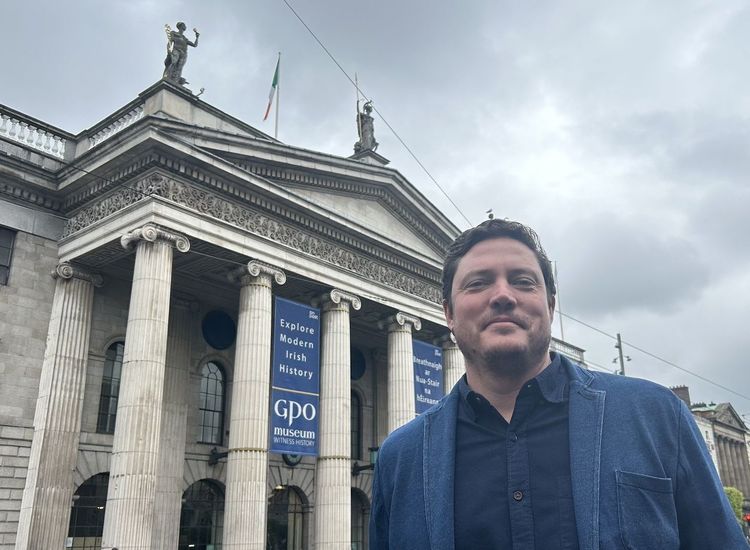[caption id="attachment_71129" align="aligncenter" width="600" caption="JFK meets Ted Williams."]
The very first Opening Day at Fenway Park, April 20, 1912, had the appearance of an old-fashioned Irish field day.
Bucky O'Brien was on the pitcher's mound. Umpire Tommy Connolly was behind home plate, and ace sports reporter Timothy Murnane was scribbling for the Boston Globe.
Mayor John "Honey Fitz" Fitzgerald, the grandfather of President John F. Kennedy, threw out the first pitch, officially kicking off the first major league game to take place at Fenway Park. It was the Boston Red Sox versus the New York Highlanders, later re-named the Yankees.
In the stands, the fanatical Royal Rooters, an Irish-American fan club led by pub owner Michael "Nuf Ced" McGreevey, cheered for the home town team and mightily jeered the New Yorkers. Some things never change.
There has been more than a tinge of Irish in the Fenway Park story, especially in the early years of the park's 100 year history. Irish-American ball players and coaches dominated the rosters in the first half century, and many of the groundskeepers, ticket takers, hot dog vendors and souvenir hawkers came from the city's sprawling Irish community.
Fenway itself was built by Charles E. Logue, an immigrant from Derry who broke ground in September 1911 and had it finished nine months later. James E. McLaughlin was the park architect; he was born in Halifax, Nova Scotia to Irish immigrant parents.
Both men had successful careers in their fields, working on many fine churches, schools and college buildings, but Fenway would become their legacy.
The groundskeeper in 1912 was Jerome Kelley, who took the infield sod from the old Huntington Avenue ball park at the end of the 1911 season and planted it in Fenway so it would be ready on opening day.
More Than Baseball
Like many ball parks in America, Fenway Park was used for more than just baseball, and that's why over the course of the 20th century you find regular references to Irish hurling and football matches, featuring All-Ireland champions against American all-star squads. Globe reporter John Ahearn once described hurling as a "combination of field hockey, lacrosse and mayhem."
Also popular at Fenway were numerous boxing and wrestling matches, with like boxers named Billy Murphy and Eddie "Kid" Sullivan and wrestlers like Danno O'Mahoney and Steve Casey.
Fenway was also a perfect setting for monster political rallies. Eamon de Valera spoke here on June 29, 1919, in front of close to 60,000 people, surpassing even the numbers of French Revolutionary War hero, the Marquis de Lafayette, who spoke at Bunker Hill in 1825.
Massachusetts Senator David I. Walsh introduced Dev to the Fenway fans, comparing him to Abraham Lincoln and predicting he would be as successful. The Boston Post called it "the best speech of Walsh's life."
Constance Markievicz and Kathleen Barry held a rally before 6,000 followers on May 28, 1922 at Fenway, this to report on the Civil War raging in Ireland that year. "The Republic still lives," she told the cheering crowd, "and we are not going to let it be swept or signed away."
In 1934, William Cardinal O'Connell had his golden jubilee open-air mass at Fenway, and 40,000 faithful turned out, including the Cavan All-Stars football team which happened to be in Boston at the time.
There were also numerous small occasions, like in September 1931, when Mayor James Michael Curley took Irish rebel Dan Breen to a game between the Red Sox and the Braves.
And in April 1946, 28-year old John F. Kennedy posed for a photo with Red Sox legend Ted Williams and others, just days before Kennedy announced his plans to run for the U.S. Congress.
Here are some highlights of the Irish connections to Fenway Park over the past century.
Irish Hurling and Football
September 4, 1916: the Galway Men's Association enjoyed a day of hurling matches
and track and field events.
May 30, 1927: The Kerry Gaelic Football played a Boston team.
June 6, 1937: the Mayo All-Ireland Football Champions beat a Massachusetts team 17 to 8. Lt. Governor John Kelly threw in the ball to start the game.
November 7, 1954: Cork's All Ireland hurling team beat a Boston team 37 to 28, then a week later a County Mayo team beat a local team 13 to 6.
Boxing and Wresting
June 26, 1928: Irish Billy Murphy lost a close match against Portuguese champion Al Mello before 12,000 boxing fans.
June 12, 1932: Eddie "Kid" Sullivan, "the perpetual motion machine from Walpole," fought Tony Acquaro of Lynn.
July 29, 1937: two heavyweights, Al McCoy and Jack McCarthy battled before 10,000 people.
June 27, 1935: Danno O'Mahoney from Cork wrestled Jimmy the Greek Londos into submission before 30,000 people.
July 20, 1937: O'Mahoney lost a tough wrestling match to fellow Irishman Steve Casey.
Other Occasions
June 23, 1958: Television personality Ed Sullivan was master of ceremonies at Mayor John Hynes' Charity Field Day.
April 17, 1964: Robert Kennedy and the Kennedy clan attended a memorial game in honor of his slain brother, President John F. Kennedy.
The Irish are part of the hallowed lore of Fenway Park, and remain so today. Among the most popular singers of the national anthem in recent years are Irish-American police officers Dan Clark and Pauline Wells, and Irish-born tenor Ronan Tynan, who moved to the Boston area recently, has sung at Fenway too.
Boston's popular punk rock band, the Dropkick Murphys, has performed at Fenway numerous times and are expected to be part of the celebrations this month.
On Sunday, April 22, from 1 to 2.30 p.m., the John F. Kennedy Library is presenting an event entitled Celebrating the Centennial of Fenway Park. The library will show a short documentary called "Rooters: The Birth of the Red Sox Nation," to be followed by a panel discussion including baseball historian and publican Peter Nash, author of "Boston's Royal Rooters;" Richard Johnson, curator of Boston's Sports Museum and author of "Field of Our Fathers: An Illustrated History of Fenway Park," and Thomas Fitzgerald, grandson of Honey Fitz, and author of a touching memoir called "Grampa Stories."
After the forum, Ken Casey, founder and leader of the Dropkick Murphys, will close the event with a rendition of "Tessie," the official song of the Royal Rooters back in the day.










